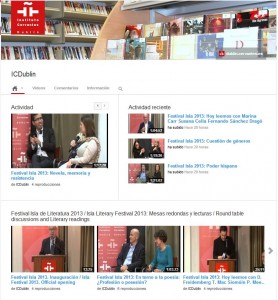Blog del Instituto Cervantes de Dublín
Torre Martello
Premios nacionales versus premios comerciales / National Awards vs Launching Pad Awards
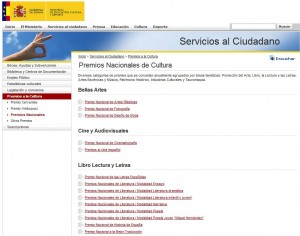 Si la semana pasada hablábamos de los Premios Goya, hoy lo hacemos sobre otro tipo de premios. Premios principalmente literarios, porque la potente industria editorial española, ya a comienzos de enero, pone en marcha toda su maquinaria y comienza a ofrecer titulares de prensa a los lectores ávidos de novedades. Así, el 6 de enero se concede el Premio Nadal, el más antiguo de España con 70 años de historia.
Si la semana pasada hablábamos de los Premios Goya, hoy lo hacemos sobre otro tipo de premios. Premios principalmente literarios, porque la potente industria editorial española, ya a comienzos de enero, pone en marcha toda su maquinaria y comienza a ofrecer titulares de prensa a los lectores ávidos de novedades. Así, el 6 de enero se concede el Premio Nadal, el más antiguo de España con 70 años de historia.
El Premio Nadal, otorgado este año a la escritora española Carmen Amoraga con la novela La vida era eso, presume además de haber marcado con sus títulos buena parte de la literatura española del siglo XX. Entre sus obras ganadoras figuran títulos como Nada, de Carmen Laforet, primera ganadora del premio en 1944, que supuso un revulsivo en la literatura española de posguerra, La sombra del ciprés es alargada de Miguel Delibes en 1947, El Jarama (1955), título después repudiado por su autor, Rafael Sánchez Ferlosio, Entre visillos (1957) de Carmen Martín Gaite, Primera memoria (1959) de Ana María Matute o Un hombre que se parecía a Orestes (1968) de Álvaro Cunqueiro.
Sin embargo, como decía Miguel Aguilar durante la conversación que mantuvimos con él hace unos meses, estos premios comerciales a obra inédita son una peculiaridad de España:
«Creo que hay que distinguir entre los premios que son a obra publicada: el Premio Nacional de Ensayo, Premio Nacional de Literatura, el Premio Salambó, por ejemplo, que se concede en Barcelona… y los premios a obra sin publicar (…). Los premios que se dan a obras sin publicar, hay que considerarlos más bien como una plataforma de lanzamiento, más que como un reconocimiento de una calidad intrínseca. Y como tal, yo creo que sirven para llamar la atención de los lectores sobre una obra determinada».
¿Qué hay entonces de esos «premios nacionales» que menciona Miguel Aguilar?
Estos premios son concedidos cada año por el Ministerio de Educación Cultura y Deporte de España a través de la Subdirección General de Promoción del Libro, la Lectura y las Letras Españolas (SGPLLL), unos premios que «tienen como objetivo estimular la creación literaria» así como reconocer «la labor en pro de la difusión de la cultura de determinadas entidades y profesionales.» Los galardonados en 2013 fueron:
- Premio Nacional de Poesía: Manuel Álvarez Torneiro por Os ángulos da brasa.
- Premio Nacional de Narrativa: José María Merino por El río del Edén.
- Premio Nacional de Ensayo: Santiago Muñoz Machado por Informe sobre España. Repensar el estado o destruirlo.
- Premio Nacional de las letras Españolas: Luis Goytisolo.
- Premio nacional del Comic: Miguelanxo Prado por Ardalén.
- Premio Nacional de Literatura Dramática: Juan Mayorga por La lengua en pedazos.
- Premio Nacional de Literatura Infantil y juvenil: César Mallorquí por La isla de Bowen.
- Premio Nacional de Poesía Joven Miguel Hernández: Unai Velasco por En este lugar.
- Premio Nacional Historia de España: José Ángel Sánchez Asiaín por La financiación de la Guerra Civil española.
- Premio Nacional a la Mejor Traducción: Carmen Montes Cano por Kallocaína.
- Premio Nacional a la Obra de un Traductor: Josu Zabaleta.
- Premio Nacional de Ilustración: Carme Solá.
- Premio Nacional de Periodismo Cultural: Antón Castro.
- Premio Nacional a la Mejor Labor Editorial Cultural: Editorial Turner.
- Premio Nacional de Fomento de la Lectura: Suplemento Cultura/s de La Vanguardia y Asociación de Profesionales de Bibliotecas Móviles (ACLEBIM).
Estos premios son solo una parte de los Premios Nacionales de Cultura, que incluyen también otras áreas como Promoción del Arte, Artes Escénicas y Música, Patrimonio Histórico, Industrias Culturales y Tauromaquia.
En nuestra biblioteca, durante los meses de enero y febrero, te proponemos precisamente una selección de títulos que han sido galardonados, a lo largo de estos últimos años, con premios nacionales o con premios comerciales. Así tú decides cuál es el que te parece mejor.
If last week we talked about the Goya Awards, today we write about literary awards, because the powerful Spanish publishing industry started 2014 offering big news to readers avid of new titles.
The Nadal Prize was awarded a couple of weeks ago to the Spanish writer Carmen Amoraga for her novel La vida era esto. This award has recognized, throughout its seventy years of history, the quality of some of the titles that marked the twentieth century Spanish literature.
Among the winning titles are novels like Nada by Carmen Laforet, winner of the first edition in 1944, La sombra del ciprés es alargada by Miguel Delibes in 1947, El Jarama by Rafael Sánchez Ferlosio in 1955, Entre visillos by Carmen Martín Gaite in 1957, Primera Memoria by Ana Maria Matute in 1959 or Un hombre que se parecía a Orestes by Alvaro Cunqueiro in 1968.
However, as Miguel Aguilar said during his visit to Dublin, these awards to unpublished work are a peculiarity of Spain :
“I think we have to distinguish between awards that are given to books that have already been published: the National Essay Prize, the National Book Award, the Salambó Award, for example, awarded in Barcelona… and awards for unpublished work (…). The awards given to unpublished works are to be regarded as a launching pad, rather than a recognition of an intrinsic quality. In this way, I think they suceed in drawing the attention of readers to a particular work”.
Ok then, what about these “National Awards” mentioned Miguel Aguilar ?
In Spain, these awards are given each year by the Ministry of Education, Culture and Sports (MECD) through the Subdirección General de Promoción del Libro, la Lectura y las Letras Españolas (SGPLLL). These awards “aim to stimulate creative writing” as well as to recognize the role of institutions and professionals in disseminating culture..
The winners in 2013 are listed above.
These awards are just part of the National Awards for Culture, which also include other areas like Arts, Music, Cultural Industries or Bullfighting.
In our library, during the months of January and February, we bring you a selection of titles and authors that have been awarded, over recent years, with National Awards or with “launching pad awards”. Then you decide which one you like best.
Cine de suspense y terror / Thriller and horror films
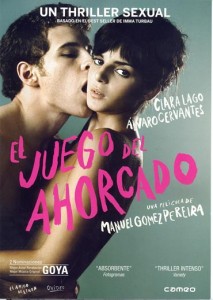 Hoy finaliza nuestro ciclo de cine Puntos suspensivos con la película de Manuel Gómez Pereira El juego del ahorcado. Pero el buen cine negro, de suspense y terror, siempre tiene un lugar de honor en nuestra biblioteca. Estos meses de noviembre y diciembre más que nunca, porque precisamente son títulos de este género los que hemos seleccionado como tema del mes para finalizar el año.
Hoy finaliza nuestro ciclo de cine Puntos suspensivos con la película de Manuel Gómez Pereira El juego del ahorcado. Pero el buen cine negro, de suspense y terror, siempre tiene un lugar de honor en nuestra biblioteca. Estos meses de noviembre y diciembre más que nunca, porque precisamente son títulos de este género los que hemos seleccionado como tema del mes para finalizar el año.
Si no pudiste asistir a la proyección de películas como Abre los ojos, REC, Mientras duermes o No habrá paz para los malvados, ahora tienes la oportunidad de verlas en nuestra biblioteca junto a otros títulos como Los otros, Cámara oscura, Frágiles, Buried o La noche de los girasoles. Películas, todas ellas, que no te dejarán quedarte dormido. Durante mucho tiempo.
Our Fear Factor Film Season finishes today with the film screening of The Hanged Man by Manuel Gómez Pereira. But the best Spanish thrillers and horror films have always a place of honor in our library. Now more than ever, as this kind of films are precisely the ones we have selected as topic of the month in the library during November and December.
So, if you could not attend the screening of films like Open your eyes, REC, Sleep Tight or No rest for the wicked, now is your chance to watch them in our library along with other titles like Fragile, Buried or The Night of the Sunflowers. Movies, all of them, that will not let you fall asleep. For a long time.
Women and Film-Makers / Mujeres y directoras de cine
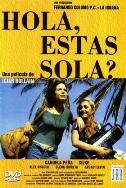
Desde que Pilar Miró dirigiera El crimen de Cuenca en 1979 (un alegato contra la violencia y la tortura del poder), el cine dirigido por mujeres en España ha experimentado un salto adelante.
El éxito de la película fue tal, que poca gente aficionada al cine en el territorio español se quedó sin verla, y Pilar Miró pasó a ser la directora de cine española más conocida de la historia. Junto a ella, las directoras Josefina Molina y Cecilia Bartolomé fueron las tres pioneras del cine de la Transición y se encargaron de pasar el testigo a un número significativo de directoras forjadas en las escuelas de cine.
En la década de los noventa se dejó atrás aquella lenta incorporación de las mujeres españolas a la dirección de cine y se produjo ya un continuo goteo de mujeres al frente de producciones variadas, algunas de calidad indiscutible, con reconocimientos y premios nacionales e internacionales, incorporándose con fuerza y afianzándose en el panorama cinematográfico, como directoras y guionistas.
Since Pilar Miró directed The Crime of Cuenca in 1979 (a plea against violence and torture), the cinema directed by women in Spain has experienced a great leap forward.
The film’s success was such that few movie buff people did not see the film when it was released in Spain and Pilar Miró became the Spanish film director best known ever.
Besides her, the directors Josefina Molina and Cecilia Bartholomew were the three pioneers of cinema during the transition to democracy and they passed the baton to a significant number of directors forged in film schools.
In the nineties, that slow incorporation of Spanish women to film direction was left behind and there was already a steady trickle of women leading all kind of productions, some of unquestionable quality, with strong recognition and national and international awards, getting in the field with notoriety and steadying themselves in the film scene, as directors and screenwriters.
The Way of Saint James / El Camino de Santiago
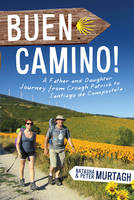
Nuestro tema del mes es el Camino de Santiago, una de las principales rutas culturales europeas. Cada año miles de peregrinos procedentes de toda España y Europa recorren un largo trecho para llegar a la ciudad de Santiago de Compostela, donde se veneran las reliquias del apóstol Santiago el Mayor. La creencia cada vez más extendida en los milagros de Santiago, provocó que la gente comenzara a peregrinar hacia Santiago de Compostela para obtener su gracia.
El Camino de Santiago significó el primer elemento vertebrador del viejo continente en la historia europea y supuso encontrar un punto de referencia indiscutible en el que podía converger la pluralidad de distintos pueblos ya cristianizados pero necesitados en aquel entonces de unidad.
Ha estado unido indisociablemente a la cultura, a la formación y a la información. Lo que se decía, predicaba, contaba, cantaba, esculpía o pintaba en el camino alcanzaba siempre a más gente y a más lugares. Gracias a su influjo en el arte y la literatura, Compostela junto con Jerusalén y Roma se convirtió en meta de la sociedad cristiana, especialmente a partir del siglo XI al XIV. El camino llegaría a ser un foco catalizador de toda la sociedad cristiana.
Durante toda la Edad Media fue muy popular, después fue ligeramente olvidado debido a diversos factores (la peste, la reforma protestante y los conflictos políticos). En la época actual ha vuelto a tomar un gran auge. El Camino de Santiago Francés y las rutas francesas del Camino fueron declarados por la Unesco Patrimonio de la Humanidad en 1993 y 1998 respectivamente, Itinerario Cultural Europeo por el Consejo de Europa y ha recibido el título honorífico de Calle mayor de Europa. En el Año Santo Compostelano de 1993, el gobierno autónomo gallego decidió potenciar su valor enfocado a un recurso turístico, de este modo se lanzó una gran campaña de publicidad para el Jacobeo de ese año: Xacobeo 93. Gracias a este plan se restauraron tramos de la ruta y las infraestructuras para peregrinos.
Desde entonces, hacer el recorrido a pie, en bicicleta o a caballo e incluso en burro es un destino popular que reúne lo religioso, espiritual, deportivo, cultural, económico, etc., tal y como ha venido ocurriendo desde el principio a través de los siglos. El camino se halla indicado por flechas pintadas de amarillo, postes y otras señales. La mayoría de los peregrinos llega a Santiago por el llamado “Camino Francés”, pero existen otras seis rutas históricas por las cuales se puede hacer el camino santo.
Si quieres preparar tu viaje de peregrinación a Santiago o simplemente saber más sobre el Camino, en la biblioteca tenemos una amplia selección de obras que te pueden ayudar.
Our topic of the month is the Camino de Santiago (The Way of St James), one of the most important European cultural routes. Every year thousands of pilgrims coming from all parts of Spain and Europe go a long distance until arriving to Santiago de Compostela where the remains of the apostle Saint James are venerated. It started when people started to believe in St James’ miracles and therefore they started to do the pilgrimage to Santiago to get his grace.
Camino de Santiago was the first backbone of the old continent in the European history and an indisputable reference point where the different conceptions of Christian peoples could find a common unity.
It has been linked inherently to culture, education and information. Everything that was said, preached, told, sung, sculpted or painted in the Camino got to a large number of people and places. Thanks to its influence in art and literature, Compostela along with Jerusalem and Rome became a meeting point of Christian society, especially between the 11th and 14th century.
It was highly travelled during the Middle ages but several factors (the Black Death, the Protestant Reformation and political unrest) led to its decline. By the 1980s, only a few pilgrims per year arrived in Santiago. Later, the route attracted a growing number of modern-day pilgrims from around the globe. The route was declared the first European Cultural Route by the Council of Europe in October 1987; it was also named one of UNESCO’s World Heritage Sites in 1993.
In 1993, a Jubilee Year, the Galician government decided to increase its popularity and planned a big advertising campaign to promote the Camino and the infrastructures were highly improved.
Today tens of thousands of Christian pilgrims and many other travellers set out each year from their front doorstep, or popular starting points across Europe, to make their way to Santiago de Compostela. Most travel by foot, some by bicycle, and a few travel as some of their medieval counterparts did, on horseback or by donkey.
In addition to people undertaking a religious pilgrimage, the majority are travellers and hikers who walk the route for non-religious reasons: travel, sport, or simply the challenge of weeks of walking in a foreign land. Also, many consider the experience a spiritual adventure to remove themselves from the bustle of modern life. It serves as a retreat for many modern “pilgrims”.
Most of the pilgrims arrive to Santiago by taking the French Way but there are other six historical routes to do the Camino.
If you want to prepare your pilgrimage route to Santiago or simply to know more about the Camino, in the library we have an ample selection of works that can help you.
La biblioteca propone / The library suggests
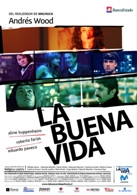
Este mes te ofrecemos dentro de la actividad cultural la tercera edición del ciclo dedicado al cine de Chile que en esta ocasión tiene como tema central el cine y la literatura. De esta manera en la biblioteca dedicamos el tema del mes a la cinematografía de Chile.
Centrándonos en su producción más reciente se habla del nuevo cine chileno como aquel que comenzó en la década de los 60 y se extiende hasta la actualidad. Recibe influencias principalmente de la cultura nacional de la década de los 60, la nueva canción chilena y producciones de otras latitudes, como el Cinema Novo brasileño.
Este movimiento de cineastas chilenos más próximos a la izquierda hay que entenderlo como influencia directa de la realidad social y política del continente americano. La fecha simbólica de su inicio es la primera edición del Festival de Cine de Viña del Mar en 1967 donde se sentaron principios como el de desarrollar una cultura nacional y abordar los diversos conflictos sociales.
La dictadura surgida a partir del golpe de estado de 1973 supuso el exilio masivo de sus cineastas que desde el exilio denunciaron la represión del régimen militar con un tono de nostalgia por la revolución truncada. Cineastas destacados son Miguel Littin, Patricio Guzmán o Raúl Ruiz.
En los últimos años el cine chileno ha vivido un fuerte auge. En el pasado Festival de Cine de Berlín la película Gloriaobtuvo una excelente acogida y su protagonista (Paulina García) obtuvo el galardón a la mejor actriz del certamen. En enero de este año la película Noprotagonizada por Gael García Bernal obtuvo la primera nominación de Chile al Óscar a la mejor película de habla no inglesa. Estos éxitos se deben en gran parte a un sólido programa de políticas públicas que han apoyado la consolidación de una industria de pequeñas dimensiones que se ha profesionalizado gracias a recursos provistos desde el Estado, primero, con la creación del Fondo Audiovisual en 2004, y a partir del 2010, con nuevos instrumentos para la internacionalización del sector audiovisual.
This month we offer you the 3rd Chilean Cinema Season as part of our cultural program. The main theme is the connection between cinema and literature. Therefore the cinema from Chile is our topic of the month in April.
The called New Chilean Cinema is its most recent production. It started in the sixties and it is still present. It was influenced by the national culture of the sixties, the new Chilean song and productions from other latitudes as the Cinema Novo from Brazil.
The majority of Chilean filmmakers were left-wing supporters and they were hugely influenced by the social and political reality of America at that time. In 1967 the first edition of the Cinema Festival of Viña del Mar set the principles: to develop a national culture and approach different social issues.
After the coup d’état in 1973, the new dictatorship meant the massive exile of the filmmakers who from the distance condemned the repression of the military regime with a nostalgic tone for the interrupted revolution. Some remarkable directors are Miguel Littin, Patricio Guzmán or Raúl Ruiz.
In the last few years Chilean cinema is reaching a height. In the last Berlin International Film Festival the film Gloria received praised from the critics and its star (Paulina García) received the Best Actress Award. In January 2013 the film No starring Gael García Bernal got the first nomination of Chile to the Oscar for Best Foreign Film.
This success is partly the consequence of a solid programme of public policies that have supported the consolidation of an industry of small size that is getting a professional character thanks to the resources provided by the Government. The Audiovisual Fund was created in 2004 and in 2010 new instruments for the internationalization of the sector has been promoted.
La biblioteca propone: Cine y literatura de terror / The library suggests: Horror film and literature
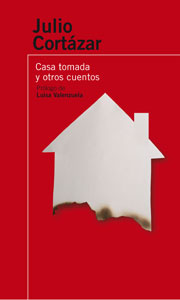 Ya pasaron los sustos de Halloween, pero antes de que llegue la Navidad, el mes de noviembre es ideal para acercarse al género de terror en el cine y en la literatura, un género que gana más adeptos cada día. Ese es precisamente nuestro tema destacado del mes.
Ya pasaron los sustos de Halloween, pero antes de que llegue la Navidad, el mes de noviembre es ideal para acercarse al género de terror en el cine y en la literatura, un género que gana más adeptos cada día. Ese es precisamente nuestro tema destacado del mes.
Considerado con frecuencia un género menor tanto en la literatura como en el cine, el género de terror, que también cuenta con obras maestras, nos ha hecho disfrutar a todos del placer del miedo. Acércate a nuestra biblioteca y descubre por qué.
For this month, the library suggests a selection of horror books and films. Horror genre is often considered a minor subject in literature and cinema. As we have just survived Halloween and once again we were scared to death, we would like to vindicate the quality of many of the books and movies specially created to be enjoyed while we are frightened.
In fact, and opposite to what happens in other sub-genres as Science Fiction or Fantastic Literarure, where we can find writers focussed on writing exclusively this kind of books, the horror genre has always attracted a wide variety of writers who have made punctual contributions to the genre, especially with short-stories.
El mundo de la traducción / The world of translation
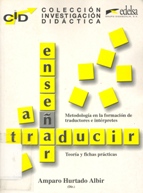 Traducir libros ha sido una labor casi paralela a los inicios de la literatura pero a pesar de eso, hasta hace relativamente poco, no se había creado un registro centralizado de obras traducidas.
Traducir libros ha sido una labor casi paralela a los inicios de la literatura pero a pesar de eso, hasta hace relativamente poco, no se había creado un registro centralizado de obras traducidas.
Con este objetivo, en 1932 se creó el Index Translationum, una iniciativa del Instituto Internacional de Cooperación Intelectual de la Sociedad de Naciones. Cuando comenzó, era tan solo un catálogo trimestral de libros traducidos en una quincena de países. La UNESCO retomó el proyecto tras la Segunda Guerra Mundial en la que es su iniciativa más longeva. Este año la institución celebra su ochenta cumpleaños. Por eso, durante este mes de junio, nuestro tema estrella es la traducción.
Translating books has been almost a parallel activity to writing since the beginning of literature but in spite of it, there was not a centralized register of translated books.
Index Translationum was created in 1932 to solve this matter. It was an initiative of the International Institute of Intellectual Cooperation of the United Nations. When it started, it was only a three-monthly catalogue of the books translated in fifteen countries.
Unesco took over the project after the Second World War, being its oldest initiative. This year the institution celebrates its eighty birthday. Because of that, during June, the library suggests you to take a look at our section about translation and translated books.
Dublin, Ciudad de la Ciencia | Dublin, City of Science
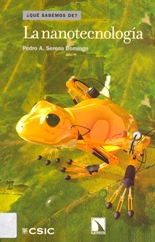 Este año, Dublín cuenta con el privilegio de haber sido nombrada Ciudad de la Ciencia. Por ese motivo, se han organizado numerosos eventos (más de 160) en los que se ofrecerán actividades para todos los gustos y públicos.
Este año, Dublín cuenta con el privilegio de haber sido nombrada Ciudad de la Ciencia. Por ese motivo, se han organizado numerosos eventos (más de 160) en los que se ofrecerán actividades para todos los gustos y públicos.
El objetivo es acercar de una manera accesible el no siempre tan insondable mundo científico, pero que con frecuencia es desconocido al gran público. Se busca despertar la curiosidad y abrir la mente a la ciencia. Así se combinará en los eventos lo mejor de la cultura irlandesa, las artes y las ciencias.
El completísimo programa cuenta con eventos organizados no solamente en Dublín sino en otras ciudades del país, acogerá exposiciones fotográficas y de arte, obras de teatro, festivales de cine, tours, búsqueda de tesoros, actuaciones callejeras, instalaciones interactivas a gran escala, experimentos, científicos de la calle, carnavales científicos, charlas, debates, talleres y por no faltar habrá hasta un desfile de moda.
La ciudad también albergará el mayor congreso científico del año, la ESOF 2012 (Euroscience Open Forum) del 11 al 15 de julio de 2012. Este evento reunirá a líderes en el campo científico y oficiales de políticas públicas que analizarán los grandes retos globales de nuestro tiempo, incluyendo energía, cambio climático, salud y alimentación.
Nuestra biblioteca se suma a esta iniciativa seleccionando para este mes de mayo su colección de libros científicos. Por ejemplo, en Princesas, abejas y matemáticas aprenderemos de una forma amena la relación de las matemáticas con la naturaleza y los procesos economizadores que permiten ahorrar recursos. En El lado oscuro del universo descubrimos cómo casi todo lo que hay en el universo es invisible. Nuestro planeta es tan solo una mínima parte de la materia y energía que ocupa el universo.
Y esto es solo un aperitivo para despertar vuestras mentes científicas, os esperamos con otros títulos igualmente apasionantes que os acercarán de una manera distinta a la ciencia y la naturaleza.
Dublin has been chosen City of Science in 2012. This celebration will consist of a programme of over 160 science-related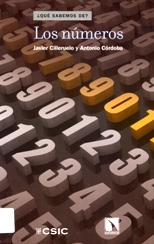 events that cross the worlds of art, culture and science.
events that cross the worlds of art, culture and science.
The main objective is to bring closer the non-always unfathomable scientific world to bigger audiences in order to awaken curiosity and open minds to science.
Therefore, these events are targeted at the general public and vary from a science themed picnic to an orchestral piece from the World Science Festival in New York. The programme, will include photographic and art exhibitions, several theatre pieces, film festivals, tours, trails and treasure hunts, street performances, science buskers, puppet performances, large-scale interactive installations, experiments, science carnivals and public talks, debates and workshops and even a fashion show.
The city will also host Europe´s largest science conference, ESOF 2012 (Euroscience Open Forum) from 11-15 July 2012. The event will bring together leading scientists and public policy officials to address all of the major global challenges of our time including Energy, Climate Change, Food and Health.
Our library will join this initiative by selecting a collection of scientific books for May. For example, we will learn in Princesas, abejas y matemáticas the relationship between maths and nature and the process to economize on resources. In El lado oscuro del universo, we find out how almost everything that exists in the universe is invisible. Our planet is only a minimum part of the matter and energy that are in the universe.
And this is just an appetizer to awaken your scientific minds, we hope to see you with other fascinating titles that will give you a different side of science and nature.
Teatro en la biblioteca / Theater in the library
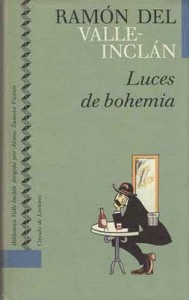 El pasado 27 de marzo se celebró el Día Mundial del Teatro, una tradición que comenzó en 1961 por iniciativa del Instituto Internacional del Teatro (ITI) y que la Unesco asumió como propia. Se trataba con ella de difundir y dar reconocimiento a esta arte escénica milenaria, que no pierde fuerza a pesar de los incesantes avances tecnológicos y las nuevas alternativas culturales.
El pasado 27 de marzo se celebró el Día Mundial del Teatro, una tradición que comenzó en 1961 por iniciativa del Instituto Internacional del Teatro (ITI) y que la Unesco asumió como propia. Se trataba con ella de difundir y dar reconocimiento a esta arte escénica milenaria, que no pierde fuerza a pesar de los incesantes avances tecnológicos y las nuevas alternativas culturales.
En España, este día volvió a celebrarse imponiendo una bufanda blanca a la estatua de Ramón María del Valle-Inclán, una de los personajes fundamentales de la dramaturgia española, en el Paseo de Recoletos en Madrid.
Su obra más relevante, “Luces de Bohemia” y su protagonista, Max Estrella, son el origen de un recorrido cultural de carácter lúdico por las calles de la capital de España, similar a la celebración del Bloomsday dublinés.
Al recorrido se le llama “La noche de Max Estrella” y fue creada por el autor teatral Ignacio Amestoy Eguigure con el patrocinio del Círculo de Bellas Artes de Madrid.
Durante la noche de Max Estrella se recorren algunas de las calles, plazas, plazuelas y callejones del centro Madrid que de una u otra manera aparecen en la obra de Valle-Inclán, y algunos de los lugares que frecuentaba el autor. Cada una de las estaciones sirve como lugar de encuentro en el que se declaman versos y dramatizan pasajes literarios, se realizan bululús, se da lectura a manifiestos así como a otros textos y parlamentos, e incluso en algunas de las paradas se sirven aperitivos, refrigerios, tentempiés y viáticos.
Este año, con motivo del quince aniversario de esta celebración, el ya tradicional recorrido por las calles, fue sustituido por una maratón teatral en el Círculo de Bellas Artes en torno al genial dramaturgo. La representación de Luces de Bohemia fue el plato principal. Una vez más, Max Estrella, poeta miserable y ciego que vagabundea por un Madrid absurdo, brillante y hambriento de principios del siglo pasado volvió a la vida para recordarnos su última noche en la que tragedia, comedia y esperpento se unen indisolublemente.
Por todo ello, el teatro es nuestro tema del mes de abril en el Instituto Cervantes y la sección de teatro es la destacada en nuestra biblioteca. Ven a conocerla.
The World Day of Theatre took place on the 27th of March. It is an initiative that started in 1961 through the International Institute of Theatre of Unesco to promote this scenic art that keeps going strong despite incessant technological developments and new cultural options.
It was celebrated in Spain by putting once again a white scarf on the statue of Ramón María del Valle-Inclán, one of the key pieces of Spanish drama. His most relevant play, “Luces de Bohemia” and his main character, Max Estrella” are the origin of a cultural route through the streets ofMadrid, it is an event similar to the Dubliner Bloomsday.
The name of the route is “The Max Estrella Night” and it was created by the playwright Ignacio Amestoy Eguigure with the support of the Circle of Fine Arts of Madrid.
It usually takes place during the evening and it goes along streets, squares, small squares and alleys of Madrid city centre rescuing the places, atmospheres and scenes that somehow appear in the play or were frequented by the author. Each stop serves as a meeting point where verses and monologues are recited, parts of the play performed, manifests are given and you can even drink and eat at some of the stops.
This year, as it is the fifteenth anniversary of this celebration, the route which has already become a tradition has been substituted by a theatrical marathon in the Circle of Fine Arts around this brilliant playwright. The performance of “Luces de Bohemia” was the main event. Once again, Max Estrella, miserable and blind poet who wanders around the absurd, shining and starving Madrid from the 19th century, came back to life to remind us about his last night. A night where tragedy, comedy and a grotesque reality tie each other indissolubly.
For all these reasons, theatre is our topic this April at Instituto Cervantes and our theatre section is the highlight in our library. Come to see it!
¡A la mesa! / At the table!
La cocina de un país es un gran libro abierto del que nos llegan aromas de historia, de geografía, de la relación de un pueblo con la tierra, de su clima, de sus intercambios culturales, de las costumbres de las familias alrededor de la mesa.
Durante los próximos meses, el Instituto Cervantes te invita a degustar el más selecto menú para las tardes otoñales:
Bebidas
A través de los seminarios de ¡Oído, cocina! podrás recorrer la gastronomía hispana desde España hasta México, incluyendo dos charlas-degustación sobre dos míticas bebidas mexicanas: el tequila y el mezcal.
Primer plato
“El sabor de las palabras” da título al ciclo de conferencias que durante noviembre y diciembre explorarán la estrecha relación entre literatura y cocina que han convertido a ésta última en una fuente de inspiración para numerosos autores.
Segundo plato
El día 1o de noviembre se inaugura la exposición “¡A la mesa! diseño y comida“, una reflexión sobre la evolución de las tendencias culinarias en España a través del diseño.
Postres
Los postres nos llevan al Café Literario, donde los cinco títulos proyectados en el ciclo “Cine y gastronomía” retratan el mundo de los fogones en la gran pantalla, ya sea en forma de documental, despertando unas carcajadas o haciéndonos llorar.
Por todo ello, desde la biblioteca te invitamos este mes a hacer una lectura de España a través de su gastronomía. Ponte el delantal y acércate a nuestra sección de cocina. Deja que tu paladar se sorprenda de la riqueza de la cocina española en la diversidad de sus regiones. Y sobre todo, atrévete a compartir la mesa con nosotros contándonos tus impresiones y cómo no, el éxito de tus platos, en nuestro blog. ¡Buen provecho!
Drinks
Throughout the seminars “May I have your order?” you will make a journey along the Hispanic gastronomy, fromSpain toMexico, including two talk/tastings where you’ll have the possibility to try two traditional Mexican drinks: tequila and mezcal.
Starters
“The taste of words” is the title of the series of talks to be held during November and December with the aim to explore the close relationship between literature and gastronomy, the last becoming an inspiration source to many authors.
Main course
The 10th of November we have the opening of the exhibition “At the table! Design and food“, a reflection on the evolution of culinary trends in Spain…
Desserts
Desserts will bring us to the Café Literario, where the five films included in the series “Cinema and gastronomy” will display the world inside the kitchen on the big screen, making us laugh or cry.
For all these reasons, the library invites you this month to take a view of Spain through the prism of its cuisine. Put on your apron and get close to our cuisine section. Let your palate get amazed with the richness and diversity of Spanish cuisine throughout its regions. And please, dare to share the table with us with comments about your impressions and the success of your dishes in our blog. Enjoy your meal!
Biblioteca para todas las edades
 El mes de octubre es el mes en el que las clases comienzan en serio. En guarderías, colegios y universidades.
El mes de octubre es el mes en el que las clases comienzan en serio. En guarderías, colegios y universidades.
Los cursos para niños comienzan en el Instituto Cervantes en apenas 11 días y el sábado día 15 disfrutaremos del primer cuentacuentos de la temporada en nuestro Café Literario.
Además, durante el mes de octubre, se celebra el Children’s Book Festival 2011, por eso hemos decidido dedicar nuestro tema del mes al público infantil y juvenil. Porque en la biblioteca tenemos libros, música y películas para todas las edades.
¡A leer, a escuchar, a ver, y sobre todo a disfrutar!
In October almost everyone starts classes in pre-schools, schools and universities.
Our program “Spanish for children” starts the 15th of October as well. This day we will enjoy the first Storytelling after summer.
During October, Dublin also celebrates the Children’s Book Festival 2011.
For all these reasons, we decided to dedicate our “library suggest” to the youngest readers in our library, because we have books, music and films for all ages.
Read! Listen! Watch! and, of course, Enjoy!
Muchísimo México
 México nos acompaña siempre, pero especialmente este mes de septiembre con el Día de la Independencia de México que se celebra el día 16.
México nos acompaña siempre, pero especialmente este mes de septiembre con el Día de la Independencia de México que se celebra el día 16.
El Instituto Cervantes contará con dos actividades culturales relacionadas con ese país: un seminario sobre el mezcal el día 14 y una representación escénica sobre Frida Kahlo el día 15.
México también está representado en nuestra biblioteca de forma permanente a través de su música, su literatura, su cine… Acércate a conocer un poco mejor este maravilloso país, el que tiene el mayor número de hablantes de español en el mundo.
Mexico will always be with us, and even more so throughout September, with Mexican Independence Day on the 16th of this month.
Instituto Cervantes will celebrate with two cultural activities: a seminar on the traditional alcoholic spirit mezcal on the 14th, and a performance based on Frida Kahlo on the 15th.
However, Mexico will always be represented in our library through its music, literature and film… Come and get to know this wonderful country, which has the largest number of Spanish speakers in the world
Lecturas de verano / Summer reads
 Muchos de vosotros estáis ya disfrutando de las vacaciones y una buena lectura, entretenida, quizás no demasiado profunda, es siempre una buena compañía.
Muchos de vosotros estáis ya disfrutando de las vacaciones y una buena lectura, entretenida, quizás no demasiado profunda, es siempre una buena compañía.
Durante los meses de julio y agosto os proponemos un repaso a algunos de los títulos más vendidos y más leídos de los últimos años en España. Feliz verano.
Many of you are already enjoying your holidays, and a good book, which is entertaining and perhaps not too heavy-going, always makes for good company.
Throughout the months of July and August, why not revisit some of the books that have topped the sales lists in Spain in the past few years. We hope you enjoy your summer.
Tebeo, cómic y novela gráfica / Cartoons, comics and graphic novels
 El día 18 de junio, con motivo de la celebración del Bloomsday, el asturiano Alfonso Zapico, premio autor revelación de 2010 en el Salón Internacional del Cómic de Barcelona, presenta en el Irish Writers’ Centre de Dublín su obra Dublinés, una novela gráfica centrada en la vida de James Joyce en la que Zapico ha invertido 3 años de su vida profesional.
El día 18 de junio, con motivo de la celebración del Bloomsday, el asturiano Alfonso Zapico, premio autor revelación de 2010 en el Salón Internacional del Cómic de Barcelona, presenta en el Irish Writers’ Centre de Dublín su obra Dublinés, una novela gráfica centrada en la vida de James Joyce en la que Zapico ha invertido 3 años de su vida profesional.
Por ello hemos querido dedicar este mes de junio a promocionar una de nuestras secciones más queridas, la de tebeo, cómic y novela gráfica.
On the 18th June, as part of our Bloomsday celebrations, Asturian illustrator Alfonso Zapico, winner of the best newcomer award at the 2010 Barcelona International Comic Fair, will present his most recent publication “Dublinés” at the Irish Writers Centre, here in Dublin. “Dublinés”, fruit of 3 years’ work by Zapico, is a graphic novel which focuses on the life of James Joyce.
We’d like to celebrate this new release by promoting one of our most loved sections; the cartoon, comic and graphic novel section of course!
Con nombre de mujer / Women’s names
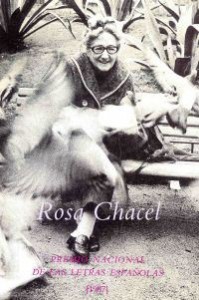 Apenas unos días después de que Ana María Matute haya recibido el Premio Cervantes, y en el mes en que Laura Freixas nos visita para hablarnos sobre la obra de Carmen Martín Gaite, os proponemos un acercamiento a algunas de las grandes autoras de la literatura escrita en español, desde las pioneras como Teresa de Ávila o Sor Juana Inés de la Cruz, hasta las escritoras con mayor éxito de ventas hoy en día como Matilde Asensi o Julia Navarro.
Apenas unos días después de que Ana María Matute haya recibido el Premio Cervantes, y en el mes en que Laura Freixas nos visita para hablarnos sobre la obra de Carmen Martín Gaite, os proponemos un acercamiento a algunas de las grandes autoras de la literatura escrita en español, desde las pioneras como Teresa de Ávila o Sor Juana Inés de la Cruz, hasta las escritoras con mayor éxito de ventas hoy en día como Matilde Asensi o Julia Navarro.
Esperamos que os guste la selección.
Otros títulos de Cecilia Böhl de Faber y Larrea, (que escribía bajo el pseudónimo de Fernán Caballero), Dulce María Loynaz, Emilia Pardo Bazán, María Zambrano, etc., os esperan en la biblioteca
Just a few days after Ana María Matute was officially awarded the Cervantes Prize, and in the same month in which Laura Freixas visit us to speak about Carmen Martín Gaite, we’d like to invite you to come and get to know some other great female authors of Spanish-language literature, from pioneering writers such as Teresa de Ávila and Sor Juana Inés de la Cruz, to today’s best-selling authors, such as Matilde Asensi and Julia Navarro.
We hope you enjoy our selection.
However many more from these authors and others await you in the library (including Cecilia Böhl de Faber y Larrea, who wrote under the pseudonym Fernán Caballero, Dulce María Loynaz, Emilia Pardo Bazán and María Zambrano).





